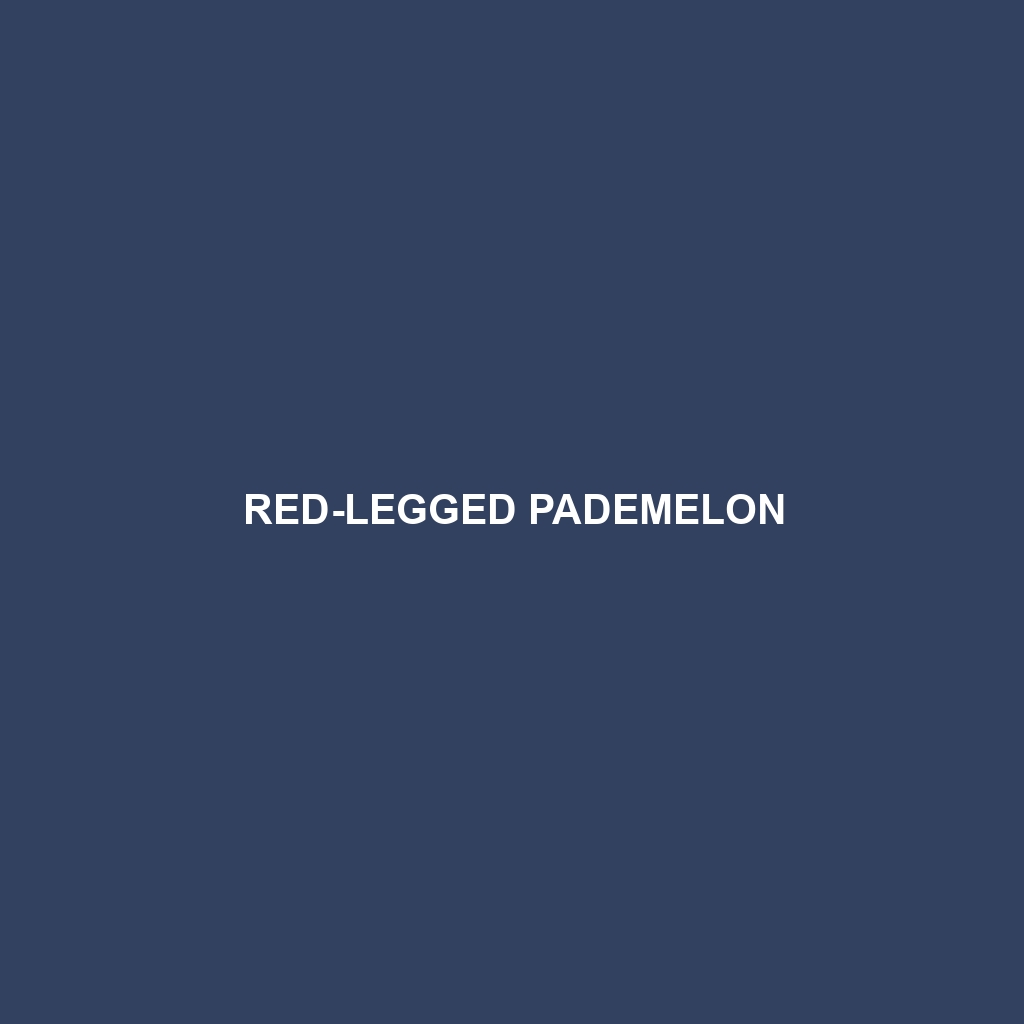Certainly! Below is a detailed description of the Red-legged Pademelon for your website.
:
The Red-legged Pademelon (Thylogale stigmatica) is a small, nocturnal marsupial found in the forests of northeastern Australia and New Guinea. Known for its distinctive reddish coloration on its legs and underbelly, this endearing creature is a crucial part of its ecosystem, contributing to seed dispersal and undergrowth maintenance. Despite its elusive nature, the Red-legged Pademelon captivates those who study it, thanks to its unique behaviors and adaptations.
Physical Characteristics:
Size: The Red-legged Pademelon typically measures between 28 to 60 centimeters in body length, with a tail length averaging 30 to 45 centimeters. Adults weigh between 3.8 to 8 kg, with males generally being larger than females.
Coloration: This species is characterized by its grey-brown fur on the back, with a prominent reddish hue on the legs and underbelly. The face often has a lighter, cream-colored patch.
Special Features: Notable features include their large, expressive eyes which aid in nocturnal vision, and their powerful hind legs adapted for hopping through dense forest undergrowth. They also have a slightly prehensile tail that helps in maintaining balance.
Behaviors:
Social Interactions: Red-legged Pademelons are generally solitary creatures, although they may be seen in small, loose groups during feeding times. They communicate through a series of soft clicks and thumping sounds made by their hind legs.
Feeding Habits: These animals are herbivores, primarily feeding on a variety of leaves, fruits, grasses, and herbs. They play an important role in their habitat by dispersing seeds through their feces, which helps in maintaining the diversity of plant species in the forest.
Ecological Roles: As nocturnal feeders, Red-legged Pademelons help to control the plant growth in their environment, preventing any single species from becoming too dominant. They also serve as prey for larger predators, thus maintaining the balance within the ecosystem.
Habitat:
Preferred Environment: Red-legged Pademelons inhabit the dense, tropical and subtropical rainforests as well as wet sclerophyll forests. They prefer areas with thick undergrowth which provides ample cover from predators and harsh weather conditions.
Geographical Range: Their range extends from the Cape York Peninsula in Queensland, Australia, down to the central Queensland coast, and across the Torres Strait to New Guinea.
Adaptations:
Nocturnal Lifestyle: Being nocturnal, they have developed large eyes and acute hearing to navigate and forage in the dark. Their camouflaged fur helps them blend into the forest floor, protecting them from predators.
Reproductive Strategies: Female Red-legged Pademelons have a well-developed pouch where they rear their young. Offspring typically stay in the pouch for about 6 months before venturing out, ensuring they are well-protected during their most vulnerable stages of development.
Conservation Status:
Current Status: The Red-legged Pademelon is currently listed as Least Concern on the IUCN Red List. However, their populations are threatened by habitat loss due to deforestation, as well as predation by introduced species such as feral cats and dogs.
Conservation Efforts: Various conservation measures are in place to protect their habitats, including the establishment of wildlife reserves and protected areas. Public awareness campaigns and research initiatives also aim to monitor and support their populations.
Fascinating Fun Facts:
Ancient Relatives: The Red-legged Pademelon is believed to have ancient ancestors dating back to the Miocene epoch, making them part of a lineage that has survived significant ecological changes over millions of years.
Agile Hoppers: Despite their small size, these pademelons are agile and can leap considerable distances to escape predators or navigate their dense forest environment.
Cultural Significance: In some indigenous cultures in Australia, the Red-legged Pademelon holds cultural significance and features in various traditional stories and art.
I hope this detailed description helps you in creating an engaging and informative section on your website about the Red-legged Pademelon!
